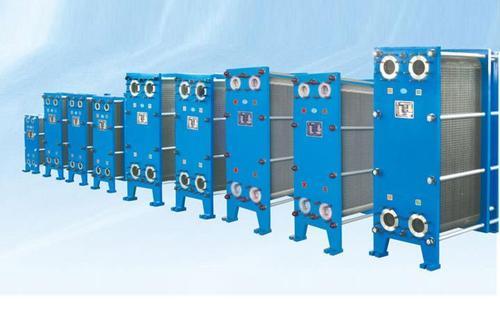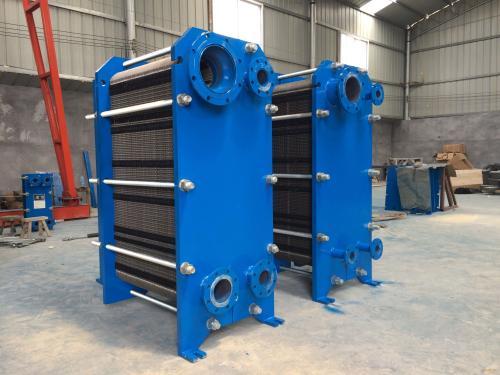Composition and function of plate heat exchanger
Release time:
2020-11-14
The sealing gasket of the plate heat exchanger is mainly used for sealing between the heat exchange plates. Data are: nitrile rubber, EPDM rubber, fluorine rubber, etc., according to different media use different rubber. The pressure plates at both ends of the 3. are mainly clamped and pressed against all heat transfer plates to ensure that the fluid medium does not leak.
Composition and function of plate heat exchanger
What are the components of the plate heat exchanger and what are the functions of each component?
Overview of plate heat exchanger:
Plate heat exchanger is a new type of high efficiency heat exchanger, which is stacked by a series of corrugated metal sheets.
Thin rectangular channels are formed between various plates, and heat is communicated through half of the plates. Plate heat exchanger is liquid-liquid, liquid-steam thermal communication of interest equipment.
It has the characteristics of high heat exchange efficiency, small heat loss, compact and light structure, small footprint, convenient equipment cleaning, wide application, and long service life.
In the case of the same pressure, the heat transfer coefficient is 3-5 times higher than that of the tube heat exchanger, covers an area of 1/3 of the tube heat exchanger, and the heat recovery rate can be as high as 90%.
the elements of the plate heat exchanger:
The plate heat exchanger is mainly composed of heat transfer plate, sealing gasket, pressure plate at both ends, clamping bolt, bracket and so on.
The functions of the components of the plate heat exchanger are as follows:
1. heat transfer plate
Heat transfer plate is the primary role of heat exchanger components, usually corrugated herringbone, according to the fluid medium is not the same, the heat transfer plate data is not the same, mostly made of stainless steel and titanium.
2. sealing gasket
The sealing gasket of the plate heat exchanger is mainly used for sealing between the heat exchange plates. Data are: nitrile rubber, EPDM rubber, fluorine rubber, etc., according to different media use different rubber.
3. pressure plates at both ends
The pressure plates at both ends are mainly clamped and pressed against all heat transfer plates to ensure that the fluid medium does not leak.
4. clamping bolt
The clamping bolt is mainly used to fasten the pressure plate at both ends. Clamping bolts are usually double-headed threads. When pre-tightening the bolts, the torque of the fixed plate is uniform.
5. rack
The first is to support the heat exchange plate to make it convenient to disassemble, clean and assemble.
Latest News









